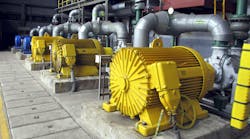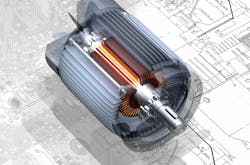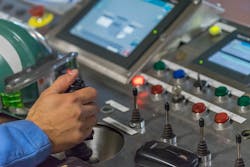When purchasing an electric motor, there’s more to consider than just its speed, power, voltage, and torque. In fact, before delving into the technicalities of a brand-new motor, manufacturers should consider whether they really need an upgraded model at all.
Choosing to Repair or Replace
So, your motor has broken down. Before reaching for a catalog with the intent of swapping the existing motor for a shiny new replacement, you should first consider whether there’s still life in the equipment. It could save you more than a few cents.
While motors can be a relatively small investment compared to some pieces of industrial automation, using the replacement method for every equipment breakdown or failure can quickly become a costly process and isn’t necessarily the most sensible option.
There are various businesses operating that can repair industrial motors, some of which may even specialize in fixing this equipment quickly. Naturally, this is the ideal scenario to get production back up and running as quickly as possible, thus minimizing downtime costs.
That said, you may want to use this opportunity to upgrade your motor and buy a more advanced or modern version. Many manufacturing facilities have a host of legacy equipment which has remained in the facility for years—or even decades. In some instances, manufacturers may find it difficult to integrate new pieces of technology with this legacy equipment. For example, new parts can cause incompatibility issues, or due to the lack of other advanced equipment in the site, can sometimes fail to operate to their full potential.
In these instances, the bright idea of upgrading to a new motor can become futile. What’s more, this could necessitate further costs for new equipment integration and extend the period of unplanned downtime caused by the motor failure. If downtime is on your mind, we would suggest opting to replace with an exact match for your existing model or attempting to repair the one you already have.
Many manufacturing facilities have a host of legacy equipment that has remained in the facility for years—or even decades. Is a brand-new motor compatible with this?
If Replacing, Choose Sensibly
Downtime is money. As a result, you would be forgiven for making fast but poorly-informed choices to get production back up and running. However, these decisions can cause ongoing expenses in the long term.
Take energy efficiency as an example. A motor may not be the most expensive of all industrial parts, but it can generate thousands in energy expenditure during its lifetime. In fact, 21% of all electricity consumption in the Western world is attributed to the running of industrial motors.
If you would like to purchase a new motor, rather than repairing your existing model, you should consider purchasing a motor that could reduce energy costs. While this is admittedly more expensive in the short term, the alternative could mean settling for eye-wateringly high electricity bills in the future.
Of course, installing a variable speed drive (VSD) is also a good option for improving the energy consumption levels of these machines. However, if you are already in the market for a new motor due to an unexpected breakdown, it makes sense to spend money on a slightly greener option for long-term energy saving gains.
Rather than buying a brand-new motor, it is better to replace with an exact match for your existing model or repair the one you already have.
Should you Buy Reconditioned?
If the idea of replacing a motor for a new version has you tightening your purse strings, don’t fret. Splashing out on a brand-new piece of equipment is not the only option. In fact, there are a range of suppliers that could provide a used or reconditioned version of the part at a much cheaper price.
One of the misconceptions about reconditioned parts is that the investment is risky, with some manufacturers fearing the equipment might be faulty or in poor condition. However, by choosing a reputable industrial parts supplier, reconditioned equipment will always be cleaned, serviced, and upgraded to optimum working order before being put back onto the market.
A reconditioned motor, for instance, would be tested extensively to ensure it functions properly and is free of defects—and the supplier should be able to prove this testing has taken place.
In some instances, manufacturers may find it difficult to integrate new pieces of technology with this legacy equipment. In these cases, an obsolete part supplier is required.
Similarly, the supplier should provide a guarantee for the product’s reliability. EU Automation, for instance, offers a 12-month guarantee on its reconditioned parts.
The advantage of purchasing a reconditioned version is that it can be significantly less expensive than buying brand new equipment. What’s more, the potential to source an exact motor replacement can help you to avoid those pesky compatibility issues.
There’s a lot to consider when purchasing an industrial motor, but before delving into the technical specifications of a brand-new model, you should consider the options: repair, replace, or recondition.
Jonathan Wilkins is marketing director of industrial parts supplier EU Automation.




